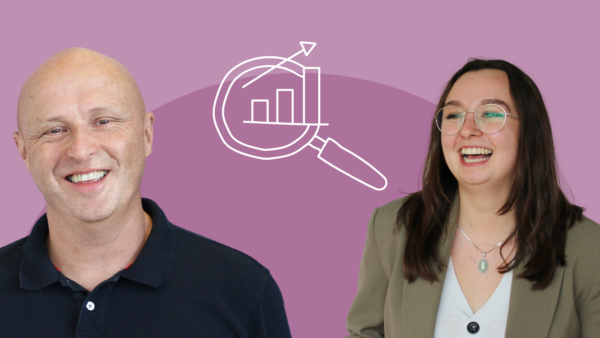Podcast transcript:
In this blog, I’m going to share with you the results from some recent research that if you’re interested in strengths, and particularly if you’re interested in strengths use in teams, you really should know about.
There isn’t a huge amount of high quality peer-reviewed research out there on the benefits of using strengths in a team setting, which is why this paper is so exciting and why I’m keen to share it with you.
What I’m going to do is summarise the research by a group of researchers from the Netherlands – Maria Meyers, Marianne Woerkom and Robin Bauwens – whose paper is Stronger together: A multilevel study of collective strengths use and team performance (reference below).
Stronger together: A multilevel study of collective strengths use and team performance
Meyers, Woerkom and Bauwens (2023), Journal of Business Research, Volume 159, April 2023, 113728
I’m going to take you through what the research explored, what they found out and finally (and most importantly) how this might impact your practice when working with teams using a strengths approach.
What did the research look at?
Meyers et al’s paper used a sample of 136 work teams and 925 individual employees and their leaders. The teams were working across diverse sectors including business services, production, construction, healthcare and education, all based in the Netherlands.
The research investigated ‘collective strengths use’ within teams as a means of improving individual and team performance. The researchers define ‘collective strengths use’ as a combination of shared awareness of individual strengths in a team (strengths awareness), mutual trust in individual strengths (strengths credibility), and an allocation of team tasks in line with these strengths (strengths coordination).
The researchers hypothesised that collective strengths use allows teams to achieve goals regarding the quantity, quality, or delivery time of team outputs by drawing on the full capacity of all team members. So basically, collective strengths use helps teams get things done quicker and better than alternative approaches.
What did they find out?
First of all, Meyer and her colleagues found out that teams with higher levels of collective strengths use (knowing colleagues’ strengths, trusting their strengths and allocation of tasks according to strengths) saw higher individual performance and higher team performance.
Secondly, they found that teams where colleagues trusted each other’s strengths and knew how and when to draw on their colleagues’ strengths (that is, the teams with the highest strengths credibility) saw the highest increases in team performance. So strengths credibility is the most important individual factor in getting the most from strengths in a team context.
The third main findings was that allocating team tasks in line with strengths only improves individual performance in teams with a high diversity of strengths. Where strengths diversity is low, allocating tasks in line with strengths can actually reduce individual performance.
So what should you do?
We could fire off in lots of directions with the findings from this research (if you read the original paper, there is some good discussion and thoughts for future research in there) but I want to keep it simple to give you the greatest value from my reading of the paper.
So my conclusions are that when working with teams, you should follow these steps:
- The first step is to help team members understand their own and their colleagues’ strengths by using a reliable, valid strengths assessment tool such as Strengthscope® (other strengths assessments are available of course but do check that they are reliable and valid before using). This will build strengths awareness.
- The second step is to facilitate conversations between team members as to how each team member’s strengths can be useful to others team members in driving towards team objectives, as well as delivering individual objectives. This will build strengths credibility and trust.
- Finally, you should support teams and team leaders in allocating work according to strengths, in teams where strengths diversity is high. Where strengths diversity is low, allow the team to decide for itself how best to use each other’s strengths in pursuit of individual and team objectives.
Meyer and her colleagues’ paper provides good evidence that the use of assessment tools such as Strengthscope® and StrengthscopeTeam™ can be highly beneficial in driving up team performance, when used by certified practitioners who follow the recommended steps.
You could also check out Cloverleaf’s platform as a great way of creating dynamic StrengthscopeTeam™ profiles on an on demand basis. If you’re not familiar with the Cloverleaf platform, please contact the Strengthscope team who will be more happy to set up a demo for you.
Conclusion – exciting findings with practical outcomes
I hope you agree with me that this research was worth sharing. As I say, there’s not a huge amount out there on strengths use in teams and this paper points us strengths practitioners in a positive direction, with some really useful, practical guidance on helping teams get the most from their strengths, both at an individual level and at a team level too. Check out the Strengthscope website Resources section for more good strengths stuff. And watch this space for any other research that I think it worthy of a Research alert in the future. Till next time, stay strong.













